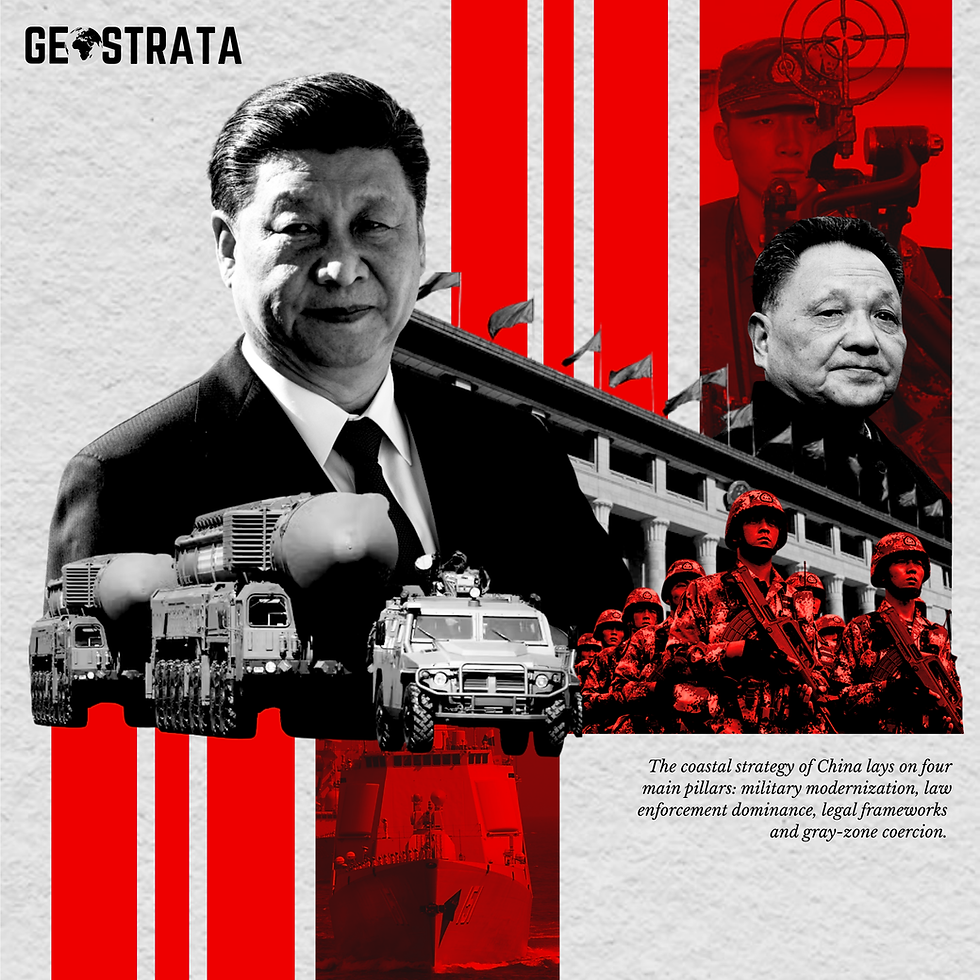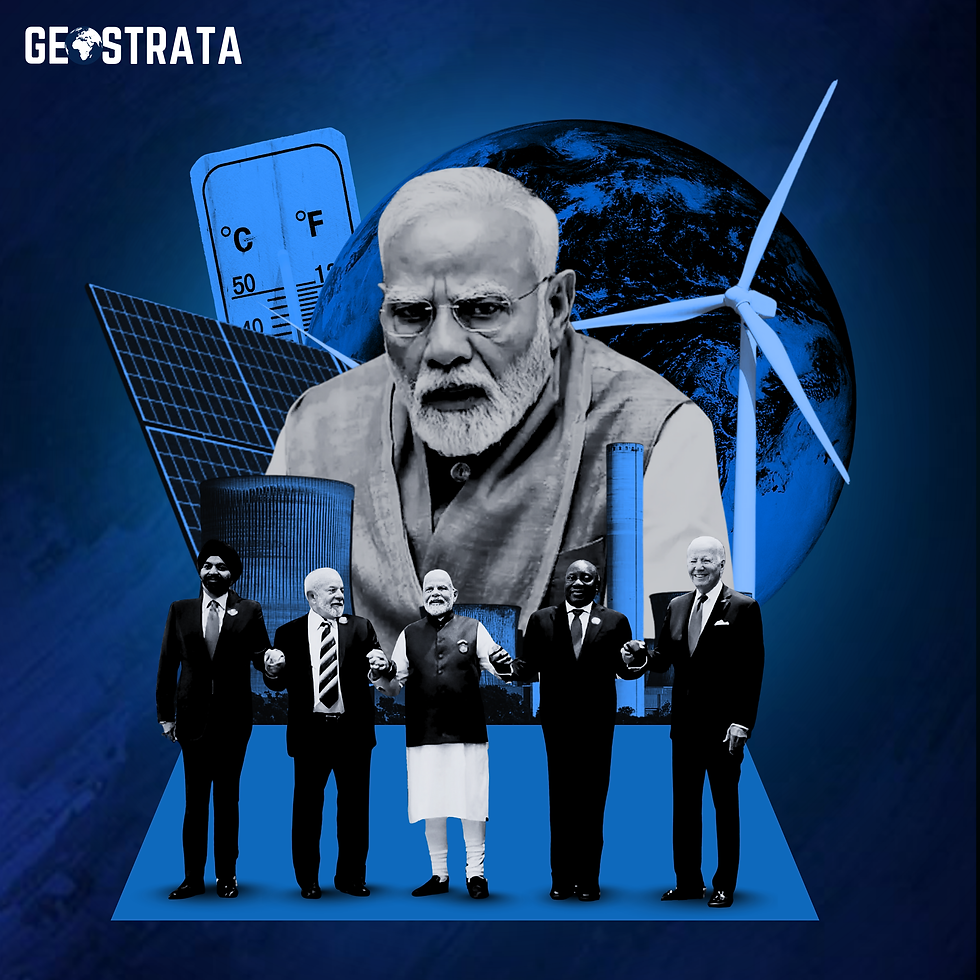When Kashmir Came Home: The Historic Accession Day
- THE GEOSTRATA

- 1 day ago
- 4 min read
Updated: 9 hours ago
Sometimes, one decision can alter the entire course of destiny. For Jammu and Kashmir, that decision came on 26 October 1947. On this day, Maharaja Hari Singh, the ruler of the princely state, signed the Instrument of Accession, choosing to join India that is Bharat, Kashmir’s home, its own civilisation.
Illustration by The Geostrata
The decision was made during immense external aggression at the hands of Pakistan. Within days of independence, Pakistan activated Operation Gulmarg, a pre-planned military operation to invade Kashmir under the guise of “tribal volunteers.” They burned villages, massacred civilians, and tried to plunge the state into chaos. It was in response to this aggression that the Maharaja turned to India for assistance, sealing the bond of accession in both law and blood.
It wasn’t a hurried alignment, as many like to think, but a lawful choice made by a sovereign ruler under the same framework that guided the accession of more than 560 princely states to India.
With that decision of 26th October 1947, Kashmir could have had a “normal” existence, had Pakistan not made it the very basis of its existence. You have to understand this to make sense of this entire saga. For Pakistan, its obsession with Kashmir comes out of its deeply rooted existential insecurity.
For a nation that was forged on the idea of hatred-filled exclusivity, aka the Two-Nation Theory, it always needs a perceived negative reason to drive its present. So, perhaps now you can see why Pakistan has made Kashmir the beginning and end of its national imagination, a fixation so toxic that it has consumed its politics and even its soul.
Pakistan has never failed to express its desire for J&K. However, the fact is that it simply does not belong with it: neither legally, nor morally, nor in any other sense. The India of today remains the legal and cultural-ethical home of Kashmir. If we rewind the clock even beyond 1947, long before the Instrument of Accession or the Independence Day of 15th August, Kashmir always existed as the home of Indian culture and philosophy.
It was here that the Sanskrit Renaissance flourished, and it is here that Mahayana Buddhism evolved during its early period.
Thus, for centuries, Kashmir has been India’s philosophical frontier; its history and spirituality are inseparable from the larger Indian mind. Kashmir was never India’s periphery; it has always been its pulse.
India has Kashmir because it is integral to their cultural and political fabric, while Pakistan believes any of its advances in the region would be incomplete without Kashmir belonging to it. Pakistan’s fixation stems from denial, a refusal to accept that Kashmir’s true plural identity disproves its Two-Nation Theory. For India, Kashmir is a living heritage; for Pakistan, it is a lost symbol. And this contrast could not have been wider.
With Love, Independence
The Special Status was conferred on Kashmir by Article 370 in 1949. The inclusion of this special constitutional position was meant to serve as a transitional arrangement aimed at easing integration after conflict. Seven decades later, its abrogation in 2019 reaffirms India’s belief that equality and not exceptionalism should define this relationship. And that is why, from now on, Kashmir’s future will be shaped not by separateness but by participation.
Yet, the scars of the past remain.
The exodus of Kashmiri Pandits stands as a painful reminder of what happens when intolerance is allowed to exist in the name of special statuses. And the community of Kashmiri Pandits still wait to return home.
But Pakistan is not the only culprit alone. China lingers as well. Its involvement in the conflict through its governing of the uninhabited Aksai Chin, and its constant support to Pakistan, whether it be via the infamous CPEC or the recent aid during Operation Sindoor, post the treacherous and barbaric Pahalgam attack, is a strong case in point.
Again, the more we make this point, the better: for both Pakistan and China, Kashmir is less about people and more about leverage. For Pakistan, it is a question of military legitimacy and for China, a leverage to support Pakistan to try and keep India busy. What often goes missing from larger public perception is the fact that Kashmir figures as a popular area of “interest” in the broader geopolitical framework of India’s two neighbours: Pakistan and China.
The Indian state knows this well.
And that is why, for a Kashmir that has long been metaphorically coupled with stone pelting, insurgencies and armed unrest, India is putting monumental efforts, with love and care, for a Kashmir that comes with a soft expression of safety and stable statecraft.
And that is the Kashmir that belongs to all of us.
78 years later, we can proudly say that Kashmir did not just join India; it came home to the civilisation that always sheltered it, and it always will. Today, India’s commitment is to heal and rebuild, to ensure that the Valley’s unparalleled beauty is matched by its peace.
With love and care for Kashmir,
Happy Accession Day.
TEAM GEOSTRATA
.png)








Comments